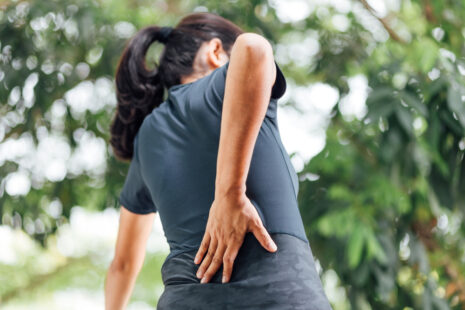If you have a bad hip or are experiencing hip pain, it’s necessary to approach exercise with caution. Whether or not you should exercise with a bad hip depends on the severity of the condition and the specific exercises you plan to do.
Here are some general guidelines to consider…
- Consult with a Healthcare Professional – Before starting any exercise program with a bad hip, it’s crucial to consult with a healthcare professional, such as a doctor or physical therapist. They can assess your hip condition, provide a proper diagnosis, and recommend appropriate exercises based on your situation.
- Avoid High-Impact Activities – High-impact exercises, such as running or jumping, can put excessive stress on the hip joint and worsen the condition. It’s best to avoid such activities if you have a bad hip.
- Focus on Low-Impact Exercises – Low-impact exercises are gentler on the joints and can be more suitable for individuals with hip issues. Examples include walking, swimming, cycling, and using an elliptical machine.
- Strengthen the Hip Muscles – Strengthening the muscles around the hip joint can help provide better support and stability to the hip. Focus on exercises that target the glutes, hip flexors, and hip abductors.
- Include Range of Motion Exercises – Gentle range of motion exercises can help maintain hip joint flexibility and prevent stiffness.
- Avoid Overexertion – Listen to your body and avoid overexerting yourself during exercise. If an exercise causes increased pain or discomfort, stop and modify or avoid that exercise.
- Use Proper Form – Always use proper form during exercises to prevent putting unnecessary strain on the hip joint.
- Warm-up and Cool-down – Before and after exercising, perform a thorough warm-up and cool-down routine to prepare your body for physical activity and promote muscle recovery.
- Modify Exercises as Needed – If certain exercises aggravate your hip pain, consider modifying them or trying alternative exercises that are less demanding on the hip joint.
- Rest and Recovery – Allow sufficient time for rest and recovery between exercise sessions to prevent overuse and give your hip time to heal.
Each individual’s hip condition is unique, and what may be suitable for one person may not be appropriate for another. Always follow the guidance of your healthcare professional and avoid pushing through pain or discomfort. If you experience persistent or worsening hip pain during exercise, stop immediately and consult with a healthcare provider for further evaluation and treatment.




